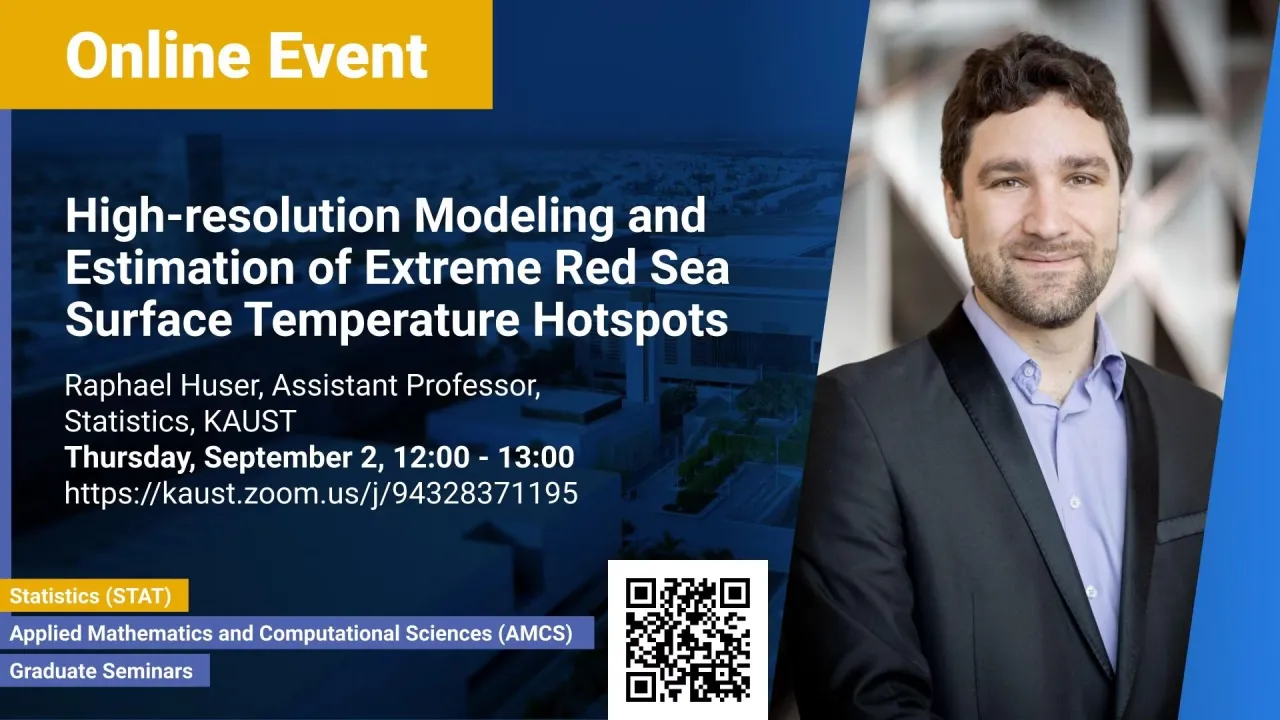
High-resolution Modeling and Estimation of Extreme Red Sea Surface Temperature Hotspots
KAUST
Modeling, estimation and prediction of spatial extremes is key for risk assessment in a wide range of geo-environmental, geo-physical, and climate science applications. In this work, we propose a flexible approach for modeling and estimating extreme sea surface temperature (SST) hotspots, i.e., high threshold exceedance regions, for the whole Red Sea, a vital region of high biodiversity.
Overview
Abstract
Modeling, estimation and prediction of spatial extremes is key for risk assessment in a wide range of geo-environmental, geo-physical, and climate science applications. In this work, we propose a flexible approach for modeling and estimating extreme sea surface temperature (SST) hotspots, i.e., high threshold exceedance regions, for the whole Red Sea, a vital region of high biodiversity. Our proposed model is a semiparametric Bayesian spatial mixed-effects linear model with a flexible mean structure to capture spatially-varying trend and seasonality, while the residual spatial variability is modeled through a Dirichlet process mixture of low-rank spatial Student-t processes to efficiently handle high dimensional data with strong tail dependence. With our model, the bulk of the SST residuals influence tail inference and hotspot estimation only moderately, while our approach can automatically identify spatial extreme events without any arbitrary threshold selection. Posterior inference can be drawn efficiently through Gibbs sampling. Moreover, we show how hotspots can be estimated from the fitted model, and how to make high-resolution projections until the year 2100, based on the Representative Concentration Pathways 4.5 and 8.5. Our results show that the estimated 95% credible region for joint high threshold exceedances include large areas covering major endangered coral reefs in the southern Red Sea.
Brief Biography
Raphaël Huser is an Assistant Professor of Statistics at the King Abdullah University of Science and Technology (KAUST), where he leads the Extreme Statistics (extSTAT) research group. He obtained his PhD degree in Statistics in 2013 from the Swiss Federal Institute of Technology (EPFL), Lausanne, Switzerland, and he also holds a BS degree in Mathematics and an MS degree in Applied Mathematics from the same institution. His research mainly focuses on the development of novel statistical methodology for the modeling, prediction and assessment of risk related to spatio-temporal extremes arising in a wide range of geo-environmental applications.
